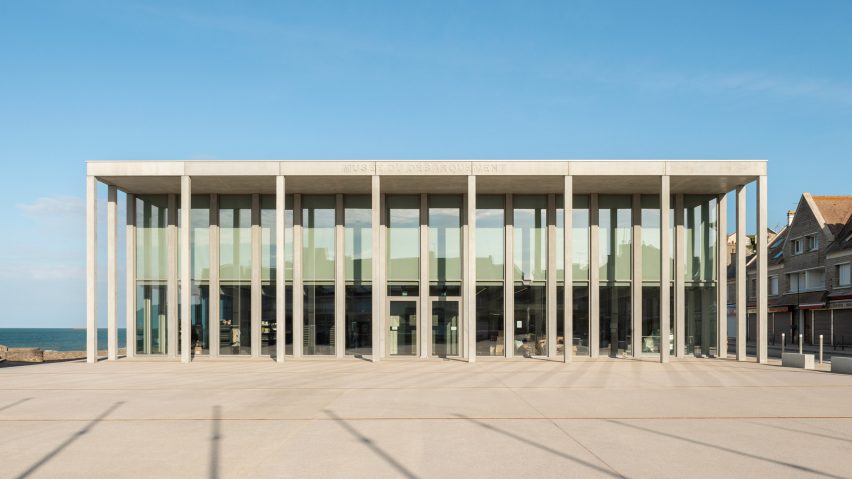
Slim concrete colonnade fronts D-Day Museum in Normandy
French studio Atelier Projectiles has created a fully-glazed, concrete-framed building as the D-Day Museum in Normandy, France.
Originally founded in 1954 as the first museum to commemorate the D-Day landings, the new museum overlooks one of the five beaches on which soldiers landed during the second world war.
Atelier Projectiles looked to create a building that would be as open to this landscape as possible, with a full-height glazed facade wrapping exposed concrete interiors that reference the nearby remnants of an artificial harbour constructed to aid the landings.
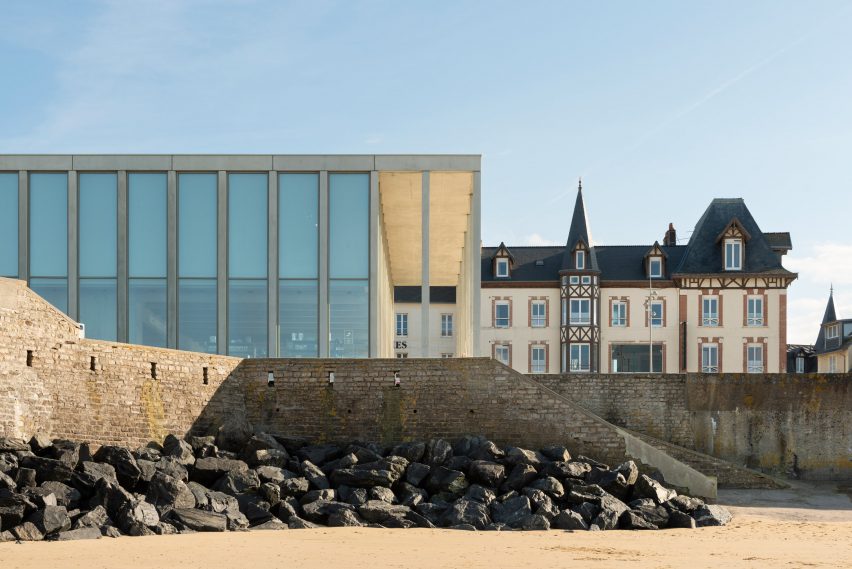
"The museum’s relation to the territory is fundamental," explained founding associate Daniel Mészáros. "Its position makes it an observatory."
"This landscape museum is imagined as a 'whole' belonging to a much vaster museum system stretching from east to west (from cliff to cliff) and from north to south (the horizon of the village)," he continued.
Entering from the adjacent Place du 6 Juin 1944, the museum's facade is sheltered by an eight-metre-high colonnade, an extension of the slender concrete "exoskeleton" that defines its exterior.
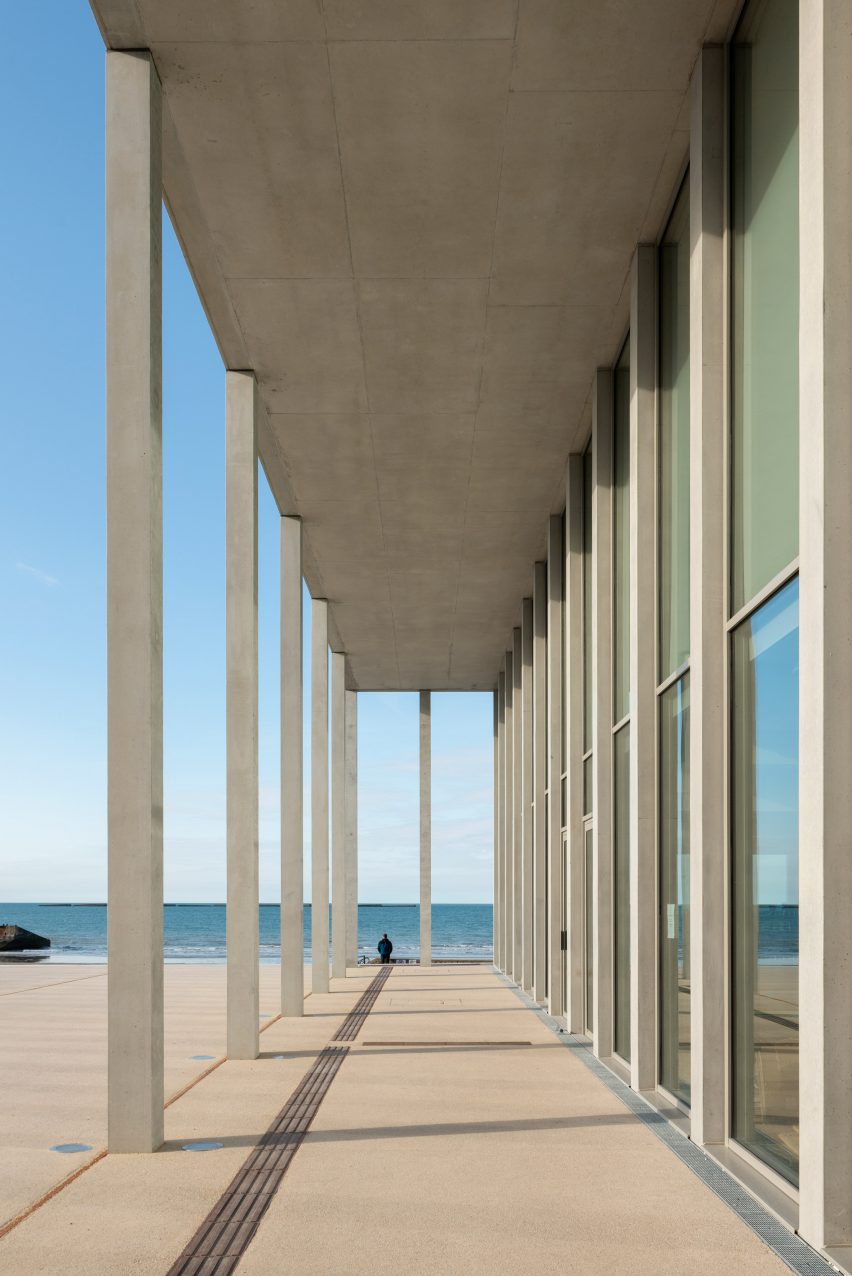
"Whilst highlighting the museum, the forecourt is an ideal space for contemplating the spectacle of the tide as it reveals the vestiges from the stands," explains Mészáros.
"It is a horizon museum whose many vistas from the interior towards the exterior – and conversely – are of the utmost importance," he added.
The interior of the museum was organised around a "longitudinal fracture" on each level, designed to reference the Phoenix breakwaters – a series of concrete cassions used in the construction of the Mulberry harbours.
The route of the museum follows a chronological path that leads across a small footbridge and through more compressed concrete spaces that gradually open out to reveal the expansive views of the beach.
This route culminates in a rooftop terrace, where visitors are provided with expansive views out across the ocean and the village behind.
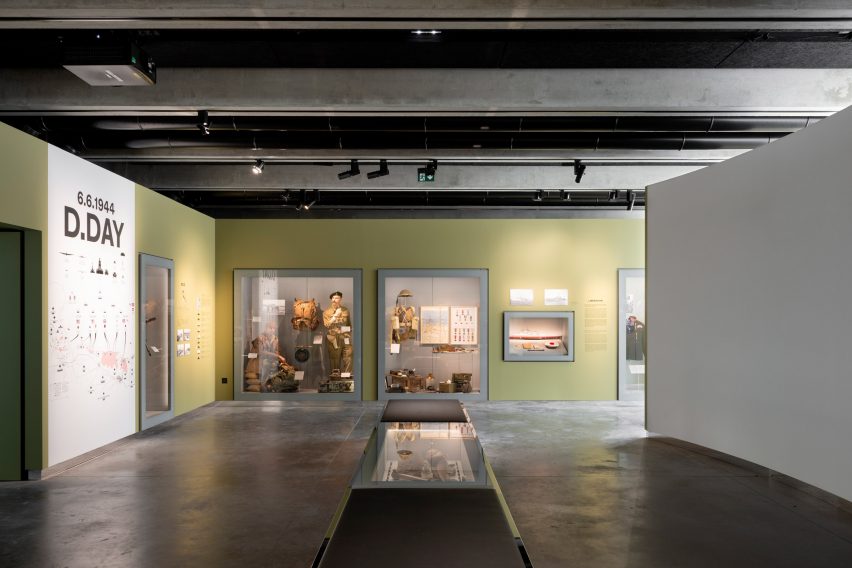
"On the ground floor, the public space, the square, and the street extend into the museum. On the first floor, on the level of the collections, cards, and objects dialogue with the landscape," said Mészáros.
"Upon reaching the roof, structures, façades, gallery walls, and projections disappear. The confrontation with the site is total."
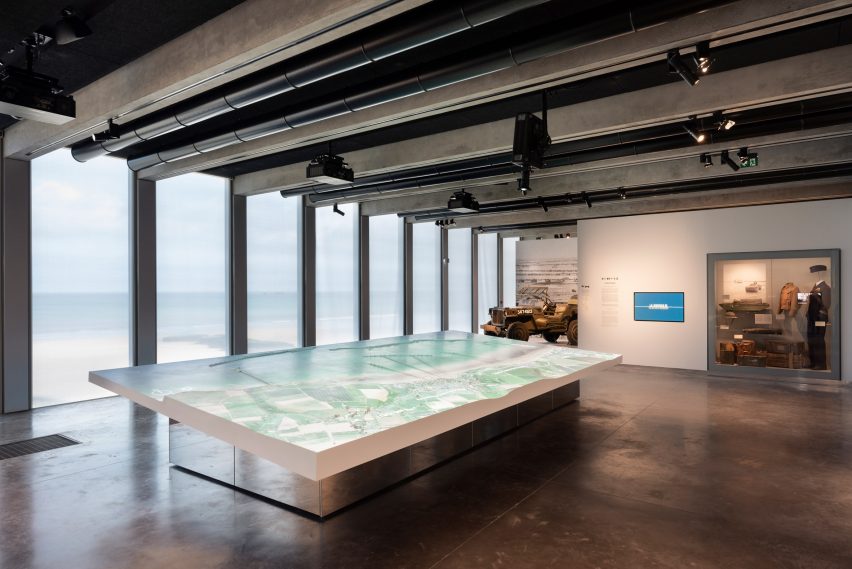
In the Netherlands, Dutch studio Kaan Architecten recently completed a visitor centre for a second world war cemetery, which also combined fully-glazed areas with "monumental" concrete forms.
The photography is by Antoine Cardi.